Calcium
How to submit an article:
- Registered users can submit any published journal article that has a unique DOI (Digital Object Identifier) name or link to Research Hub.
- For example, you can paste the full DOI link:
https://doi.org/10.1109/5.771073or just the DOI name:10.1109/5.771073into the field above and click submit. - The person who is first to submit a valid article to Research Hub will forever be credited for it, and every article submission earns you +6 Research Points.
Related Topics
Published research studies are articles that present the findings of original research that has undergone a peer-review process and has been made publicly available in scholarly journals, books or other media.
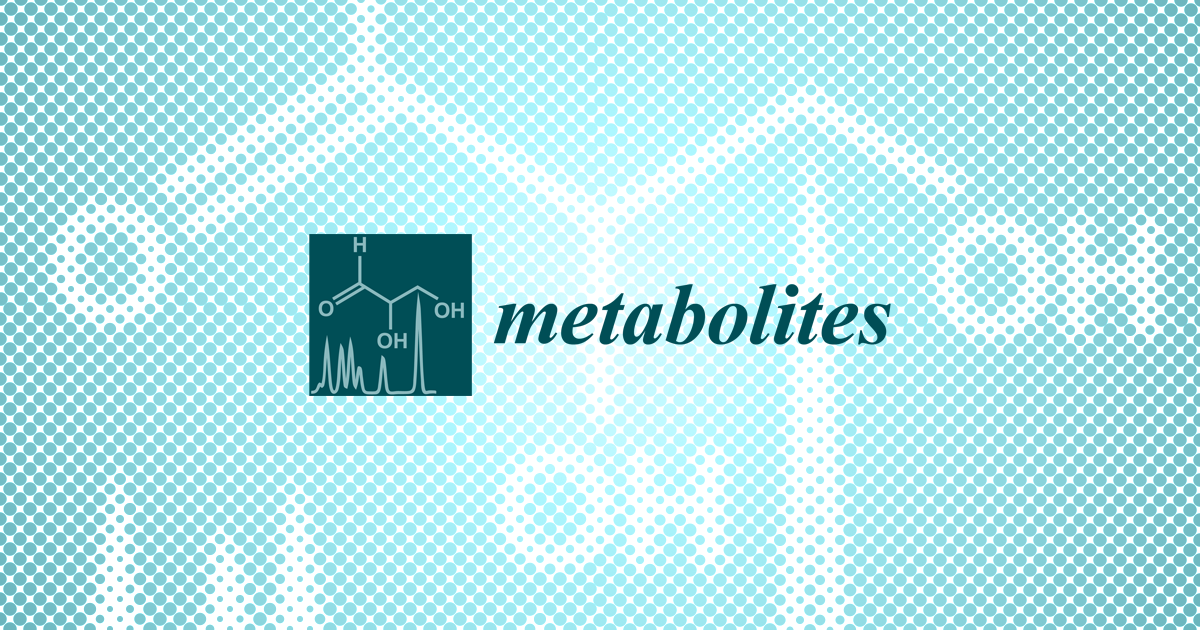
Supplementing Low-Sodium Bicarbonate–Calcic (Lete)® Water: Effects in Women on Bone and Systemic Metabolism
2023 Oct 24 Metabolites Marino C, Pagano I, Castaldo G, Grimaldi M, D’Elia M, Santoro A, et al.
Clinical Study MenopauseConsuming bicarbonate-calcium mineral water, low in sodium, can help manage calcium imbalance and support bone health in perimenopausal women.
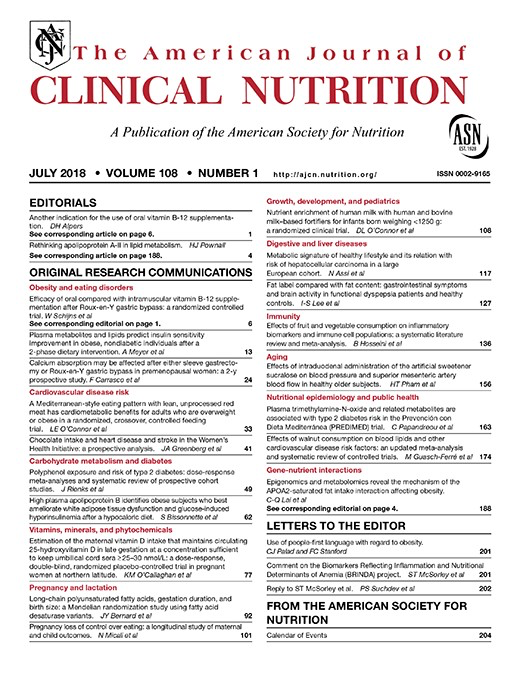
Moderate consumption of freeze-dried blueberry powder increased net bone calcium retention compared with no treatment in healthy postmenopausal women: a randomized crossover trial
2023 Aug The American Journal of Clinical Nutrition Hodges JK, Maiz M, Cao S, Lachcik PJ, Peacock M, McCabe GP, et al.
Experimental Study Clinical Study Randomised Controlled Trial Bone Calcium BlueberryModerate consumption of blueberries may effectively reduce bone loss in healthy postmenopausal women.

Exploring the Potential Benefits of Natural Calcium-Rich Mineral Waters for Health and Wellness: A Systematic Review
2023 Jul 13 Nutrients Pop MS, Cheregi DC, Onose G, Munteanu C, Popescu C, Rotariu M, et al.
Systematic Review Meta-Analysis Cardiovascular Disease High Blood Pressure Mineral Water Natural Calcium-rich mineral water Bone Health CalciumNatural calcium-rich mineral waters offer a bioavailable calcium source, beneficial for bone health, cardiovascular function, weight management, and overall well-being.

Calcium and vitamin D for increasing bone mineral density in premenopausal women
2023 Jan 27 Cochrane Database of Systematic Reviews Méndez-Sánchez L, Clark P, Winzenberg TM, Tugwell P, Correa-Burrows P, Costello R
Systematic Review Osteoporosis Calcium
Just Drink a Glass of Water? Effects of Bicarbonate–Sulfate–Calcium–Magnesium Water on the Gut–Liver Axis
2022 Jun 28 Frontiers in Pharmacology Gravina AG, Romeo M, Pellegrino R, Tuccillo C, Federico A, Loguercio C
Fonte Essenziale water has beneficial effects on gastrointestinal hormone levels and the gut-liver axis in patients with NAFLD, but these effects are only observed during the period when the patients are drinking the water and are lost after discontinuation.
Clinical StudyResearch insights are moderated by the Research Hub team and offer an at-a-glance overview of interesting research findings.

2023 Metabolites
Consuming bicarbonate-calcium mineral water, low in sodium, can help manage calcium imbalance and support bone health in perimenopausal women.
Clinical Study Menopause
Supplementing Low-Sodium Bicarbonate–Calcic (Lete)® Water: Effects in Women on Bone and Systemic Metabolism
Marino C, Pagano I, Castaldo G, Grimaldi M, D’Elia M, Santoro A, et al.

2023 The American Journal of Clinical Nutrition
Moderate consumption of blueberries may effectively reduce bone loss in healthy postmenopausal women.
Experimental Study Blueberry Bone Calcium
Moderate consumption of freeze-dried blueberry powder increased net bone calcium retention compared with no treatment in healthy postmenopausal women: a randomized crossover trial
Hodges JK, Maiz M, Cao S, Lachcik PJ, Peacock M, McCabe GP, et al.

2023 Nutrients
Natural calcium-rich mineral waters offer a bioavailable calcium source, beneficial for bone health, cardiovascular function, weight management, and overall well-being.
Systematic Review Bone Health Cardiovascular Disease High Blood Pressure Mineral Water Natural Calcium-rich mineral water
Exploring the Potential Benefits of Natural Calcium-Rich Mineral Waters for Health and Wellness: A Systematic Review
Pop MS, Cheregi DC, Onose G, Munteanu C, Popescu C, Rotariu M, et al.

2019 Frontiers in Pharmacology
Pu-erh tea's ability to lower blood pressure is primarily due to theabrownins and caffeine, which cause vasodilation irrespective of the endothelium.
Experimental Study High Blood Pressure
Pu-Erh Tea Relaxes the Thoracic Aorta of Rats by Reducing Intracellular Calcium
Luo Dan, Chen Xuejiao, Zhu Xu, Liu Shuang, Li Jie, Xu Jianping, et al.
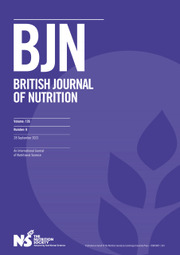
2015 British Journal of Nutrition
High intake of magnesium from foods is linked to a significant decrease in the odds of developing reflux oesophagitis and Barrett's oesophagus.
Cohort Study Adenocarcinoma GERD Magnesium
Dietary magnesium, calcium:magnesium ratio and risk of reflux oesophagitis, Barrett’s oesophagus and oesophageal adenocarcinoma: a population-based case–control study
Dai Q, Cantwell MM, Murray LJ, Zheng W, Anderson LA, Coleman HG
Review Articles
Review articles summarise and critically evaluate the current state of research on a specific topic or field by synthesising multiple primary research studies.

Exploring the Potential Benefits of Natural Calcium-Rich Mineral Waters for Health and Wellness: A Systematic Review
2023 Jul 13 Nutrients Pop MS, Cheregi DC, Onose G, Munteanu C, Popescu C, Rotariu M, et al.
Systematic Review Meta-Analysis Cardiovascular Disease High Blood Pressure Mineral Water Natural Calcium-rich mineral water Bone Health CalciumNatural calcium-rich mineral waters offer a bioavailable calcium source, beneficial for bone health, cardiovascular function, weight management, and overall well-being.

Calcium and vitamin D for increasing bone mineral density in premenopausal women
2023 Jan 27 Cochrane Database of Systematic Reviews Méndez-Sánchez L, Clark P, Winzenberg TM, Tugwell P, Correa-Burrows P, Costello R
Systematic Review Osteoporosis CalciumThis Cochrane review does not support the isolated or combined use of calcium and vitamin D supplementation in healthy premenopausal women to improve bone mineral density in the total hip or lumbar spine, and therefore it is unlikely to have a benefit for the prevention of fractures (vertebral and non‐vertebral). —Jinnan C 11 Feb 2023

Vitamin D Effects on the Immune System from Periconception through Pregnancy
2020 May 15 Nutrients Schröder-Heurich B, Springer CJP, von Versen-Höynck F
In recent years, the role of vitamin D in human physiology has been redefined. The effects of vitamin D are no longer based solely on calcium homeostasis and bone health, but have been extended to include its role as an immunomodulator and in the female reproductive system.
Review Article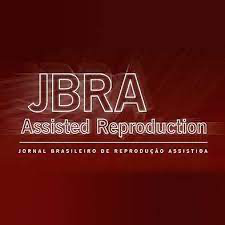
An update and systematic review on the treatment of primary dysmenorrhea
2019 Jan JBRA Assisted Reproduction Sharghi M, Mansurkhani SM, Ashtary-Larky D, Kooti W, Niksefat M, Firoozbakht M, et al.
Medicinal plants, drugs, and acupressure seem to suppress pain by reducing the level of prostaglandins, mediating nitric oxide, increasing beta-endorphin levels, blocking the calcium channel, and enhancing circulatory flow through the uterine pathway.
Systematic Review Meta-Analysis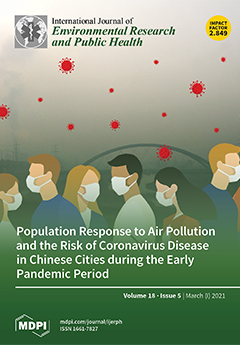
The Role of Vitamin D in Fertility and during Pregnancy and Lactation: A Review of Clinical Data
2018 Oct 12 International Journal of Environmental Research and Public Health Pilz S, Zittermann A, Obeid R, Hahn A, Pludowski P, Trummer C, et al.
Meta-analyses of randomized controlled trials (RCTs) document that physiological vitamin D supplementation during pregnancy is safe and improves vitamin D and calcium status, thereby protecting skeletal health. Although certain RCTs and/or meta-analyses reported some other beneficial effects, it is still not clear whether vitamin D supplementation improves fertility or decreases the risk of adverse pregnancy outcomes such as low birth weight, pre-eclampsia and neonatal mortality, or reduces wheeze/asthma in the infants.
Review Article Breastfeeding PregnancyClinical Trials
Clinical trials are research studies that involve people and are conducted to evaluate the safety and efficacy of new treatments or interventions, such as drugs, medical devices, or behavioural therapies.

Moderate consumption of freeze-dried blueberry powder increased net bone calcium retention compared with no treatment in healthy postmenopausal women: a randomized crossover trial
2023 Aug The American Journal of Clinical Nutrition Hodges JK, Maiz M, Cao S, Lachcik PJ, Peacock M, McCabe GP, et al.
Experimental Study Clinical Study Randomised Controlled Trial Bone Calcium BlueberryModerate consumption of blueberries may effectively reduce bone loss in healthy postmenopausal women.

Fresh lemon juice supplementation for the prevention of recurrent stones in calcium oxalate nephrolithiasis: A pragmatic, prospective, randomised, open, blinded endpoint (PROBE) trial
2022 Jan EClinicalMedicine Ruggenenti P, Caruso MR, Cortinovis M, Perna A, Peracchi T, Giuliano GA, et al.
Fresh lemon juice supplementation, in addition to a standard diet, may potentially prevent stone recurrence in patients with calcium-oxalate nephrolithiasis, with explorative analyses showing a significant reduction in recurrence at one-year follow-up. However, decreasing adherence to lemon juice supplementation over time may reduce its efficacy.
Randomised Controlled Trial Calcium Oxalate Kidney Stone Lemon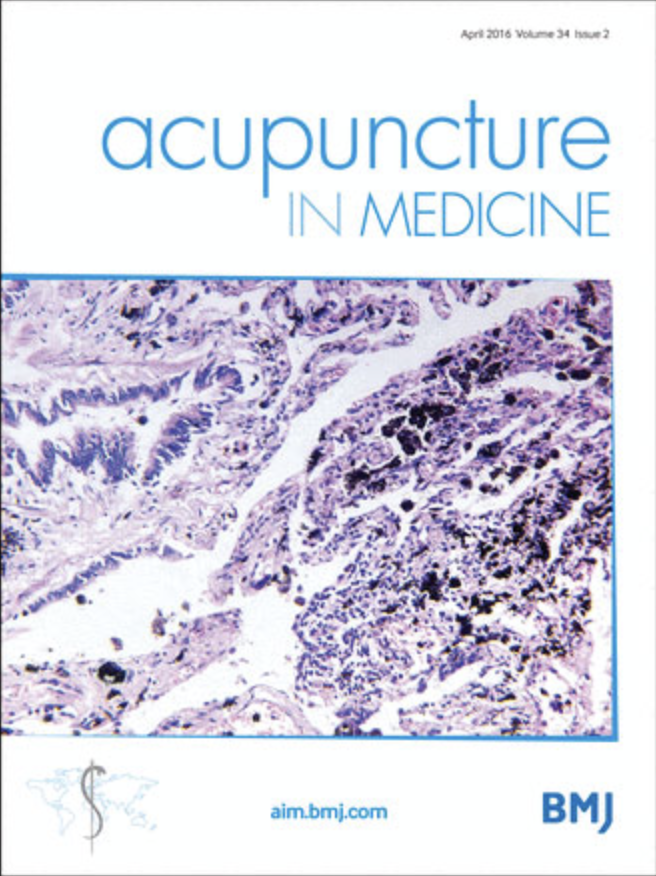
Effects and mechanism of action of transcutaneous electrical acupuncture point stimulation in patients with abnormal semen parameters
2019 Feb Acupuncture in Medicine Yu Y, Sha SB, Zhang B, Guan Q, Liang M, Zhao LG, et al.
The present findings suggest that 2 Hz transcutaneous electrical acupuncture point stimulation (TEAS) can improve sperm count and motility in patients with abnormal semen parameters, and is associated with increases in seminal plasma zinc, neutral α-glucosidase (NAG) and fructose. The upregulation of calcium and integrin-binding protein 1 (CIB1) and downregulation of cyclin-dependent kinase 1 b (CDK1) by TEAS may be associated with its positive effects on sperm motility and count.
Randomised Controlled Trial Male FertilityMineral water intake reduces blood pressure among subjects with low urinary magnesium and calcium levels
2004 Nov 30 BMC Public Health Rylander R, Arnaud MJ
Randomised Controlled Trial Magnesium Calcium High Blood Pressure Mineral WaterDrinking mineral water, especially those high in magnesium, helps lower blood pressure among individuals with borderline hypertension and low calcium or magnesium excretion.
Study Protocols
Published study protocols are detailed plans that outline the objectives, methodology, statistical analyses, and organisation of a research study that have been made publicly available for others to review and use as a reference.
Presentation Slides

Clinical Study
Consuming bicarbonate-calcium mineral water, low in sodium, can help manage calcium imbalance and support bone health in perimenopausal women.
Marino C, Pagano I, Castaldo G, Grimaldi M, D’Elia M, Santoro A, Conte A, Molettieri P, Parisella C, Buonocore M, D’Ursi AM, Rastrelli L

Experimental Study
Moderate consumption of blueberries may effectively reduce bone loss in healthy postmenopausal women.
Hodges JK, Maiz M, Cao S, Lachcik PJ, Peacock M, McCabe GP, McCabe LD, Cladis DP, Jackson GS, Ferruzzi MG, Lila MA, Bailey RL, Martin BR, Weaver CM

Systematic Review
Natural calcium-rich mineral waters offer a bioavailable calcium source, beneficial for bone health, cardiovascular function, weight management, and overall well-being.
Pop MS, Cheregi DC, Onose G, Munteanu C, Popescu C, Rotariu M, Turnea MA, Dograru G, Ionescu EV, Oprea D, Iliescu MG, Minea M, Stanciu LE, Silișteanu SC, Oprea C

Experimental Study
Pu-erh tea's ability to lower blood pressure is primarily due to theabrownins and caffeine, which cause vasodilation irrespective of the endothelium.
Luo Dan, Chen Xuejiao, Zhu Xu, Liu Shuang, Li Jie, Xu Jianping, Zhao Jinhua, Ji Xu

Cohort Study
High intake of magnesium from foods is linked to a significant decrease in the odds of developing reflux oesophagitis and Barrett's oesophagus.
Dai Q, Cantwell MM, Murray LJ, Zheng W, Anderson LA, Coleman HG

Review Article
Consuming a diverse mix of dietary measures enhances iron absorption more effectively than focusing on single nutrients or foods, especially in young women.
Beck K, Conlon C, Kruger R, Coad J
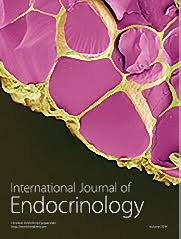
Animal Study
Regular intake of mineral-rich water, high in sodium bicarbonate, potassium, calcium, and magnesium, potentially reduces risk of Metabolic Syndrome and atherosclerotic cardiovascular disease.
Pereira CD, Severo M, Araújo JR, Guimarães JT, Pestana D, Santos A, Ferreira R, Ascensão A, Magalhães J, Azevedo I, Monteiro R, Martins MJ

Randomised Controlled Trial
Drinking mineral water, especially those high in magnesium, helps lower blood pressure among individuals with borderline hypertension and low calcium or magnesium excretion.
Rylander R, Arnaud MJ
Executive Summary
Write an executive summary in the form of a blog article on the topic of "Research into Chinese medicine treatment for Calcium" summarising the research below and using language that can be easily understood by patients and avoiding medical jargon using a professional and caring tone of voice.
Write an executive summary in the form of a blog article on the topic of "Researched Chinese medicine treatments for Calcium" summarising the research below in an objective and easy to understand way, and using language that can be easily understood by patients. Group the article into Chinese medicine treatments first, followed by nutrition and other treatments. Avoid using medical jargon and use a professional and caring tone of voice.
Write me a concise but easy to understand executive summary on the topic of "Chinese medicine treatments for Calcium" based on the following research that I will give you. Your summary should be 2 paragraphs long in Australian English spelling and include references to the studies.
A Clinical Study published in 2023 in the journal Metabolites found that Consuming bicarbonate-calcium mineral water, low in sodium, can help manage calcium imbalance and support bone health in perimenopausal women. The study involved 120 perimenopausal women who consumed 2 liters of a specific bicarbonate-calcium mineral water (Lete) daily for six months. This water was chosen because it is rich in calcium and bicarbonate but low in sodium. The study aimed to determine the impact of this water on bone health and overall metabolism. The participants’ urine and blood serum were analyzed using NMR-based metabolomic procedures. These analyses were conducted to assess the effects of the water not only on calcium metabolism but also on the broader systemic metabolism. The findings indicated that the Lete water effectively compensated for calcium dysmetabolism and supported bone health and integrity in perimenopausal women. While the study primarily focused on bone metabolism, it also provided insights into the potential system-wide metabolic effects of this specific type of mineral water. This suggests that such water could be a valuable dietary supplement for addressing calcium-related metabolic issues, particularly in perimenopausal women.
A Experimental Study published in 2023 in the journal The American Journal of Clinical Nutrition found that Moderate consumption of blueberries may effectively reduce bone loss in healthy postmenopausal women. The research began with a blueberry dose-response study with ovariectomized rats, used as an experimental model simulating postmenopausal conditions. These rats were fed with various doses of blueberry powder, with the aim to identify an optimal dosage for bone calcium retention. The experiment then translated to a human study where fourteen healthy women, all more than four years past menopause, were examined. A baseline was established, and then each participant was provided with varying dosages of freeze-dried blueberry powder equivalent to defined portions of fresh blueberries, to be consumed daily for a series of six weeks at a time. Tracing calcium in the urine was employed as a method to monitor bone calcium balances in both the rat and human trials. The collected data indicated that both the rat and human subjects benefited from blueberry interventions at lower doses. Higher doses, however, showed no such beneficial impact on bone calcium balance. In human subjects, net bone calcium retention increased with low and medium doses of blueberry consumption. Increased urinary excretion of hippuric acid, a metabolite of the antioxidants present in blueberries, was observed with an increase in blueberry consumption. No significant associations were found between bone resorption biomarkers and the interventions implemented in the study.
A Systematic Review published in 2023 in the journal Nutrients found that Natural calcium-rich mineral waters offer a bioavailable calcium source, beneficial for bone health, cardiovascular function, weight management, and overall well-being. This systematic review analyzed peer-reviewed articles, clinical trials, and experimental studies from the past decade. It focused on the health benefits of calcium-rich mineral waters, especially for individuals with lactose intolerance or on plant-based diets. The review process assessed the contribution of these waters to daily calcium intake and their bioavailability compared to other calcium sources. The review found that natural mineral waters high in calcium can significantly enhance calcium intake, with improved absorption rates. These waters show promise in promoting bone health and cardiovascular function, including potential reductions in blood pressure and cardiovascular disease risk. Some evidence suggests benefits in weight management. However, the review highlighted the need for further research on interactions with other dietary components, effects on specific health conditions, and long-term consumption impacts. Despite these gaps, calcium-rich mineral waters are recognized as a valuable dietary calcium source for a diverse population.
A Experimental Study published in 2019 in the journal Frontiers in Pharmacology found that Pu-erh tea's ability to lower blood pressure is primarily due to theabrownins and caffeine, which cause vasodilation irrespective of the endothelium. For the research methodology, researchers used pu-erh tea aqueous extract to analyze its effects on rat thoracic aortas previously tightened by Phenylephrine or KCl. They observed the isometric tension and intracellular calcium to gauge the direct effects of the tea. The aqueous tea extract was separated into different fractions using organic solvents to identify the specific active components. They assessed the impact these had on the arteries. The results demonstrated that the vessels relaxed in response to the pu-erh tea extract, irrespective of whether the endothelium was removed or preincubated with potassium channel blockers. Furthermore, the contractibility of the vessels induced by Phenylephrine or CaCl under different conditions was reduced. There was also a decrease in the KCl-induced increase of intracellular calcium in rat aortic smooth muscle cells. Among the different components, researchers found that the chloroform precipitate of the pu-erh tea extract resulted in the strongest vasodilation. Theabrownins, a major part of this precipitate, and caffeine were identified as the active components causing vasodilation in an endothelium-independent manner.
A Cohort Study published in 2015 in the journal British Journal of Nutrition found that High intake of magnesium from foods is linked to a significant decrease in the odds of developing reflux oesophagitis and Barrett's oesophagus. The study involved participants who were cases of oesophageal adenocarcinoma, Barrett's oesophagus, reflux oesophagitis and population-based controls, all gathered from throughout Ireland between 2002 and 2005. Each participant completed a 101-item Food Frequency Questionnaire (FFQ). The association between dietary intakes of magnesium, calcium and the ratio of calcium to magnesium on the risk of oesophageal adenocarcinoma, Barrett's oesophagus and reflux oesophagitis was analysed using unconditional logistic regression analysis, adjusting for potential confounders. In terms of results, participants consuming the highest amounts of magnesium from food considerably reduced their odds of reflux oesophagitis and Barrett's oesophagus when compared to those consuming the smallest amounts. This protective effect of magnesium was even more noticeable when the intake of calcium to magnesium was low. However, no significant associations were found between magnesium intake and the risk of oesophageal adenocarcinoma.
A Review Article published in 2014 in the journal Nutrients found that Consuming a diverse mix of dietary measures enhances iron absorption more effectively than focusing on single nutrients or foods, especially in young women. This review examined dietary factors that contribute to iron deficiency in young women residing in industrialized countries. The study analysed dietary elements such as ascorbic acid and animal protein foods - meat, fish, and poultry - that enhance iron absorption. Conversely, it also explored elements like phytic acid, soy protein, calcium, and polyphenols, which inhibit this process. Furthermore, the research also delved into the complex interactions between these dietary factors, whose consumption effects may cancel each other out. The study made use of cross-sectional studies to deduce the relationship between diet and iron status. Through these studies, it was discovered that only meat intake consistently resulted in higher serum ferritin concentrations, indicating increased iron stores. In recent studies, the combination and timing of foods consumed were considered, yielding rather mixed results. The results indicate that while some diet elements such as ascorbic acid and meat enhance iron absorption, their impact may be nullified when consumed alongside inhibitory foods and nutrients. Across different studies, meat intake consistently improved iron status, hinting at its potential role in mitigating iron deficiency. However, the most striking finding is that using a broad selection of dietary measures, rather than focusing on individual nutrients or foods, presents a more effective approach. This suggests dietary diversification could be crucial for preventing and treating iron deficiency, particularly in young women in industrialized countries.
A Animal Study published in 2014 in the journal International Journal of Endocrinology found that Regular intake of mineral-rich water, high in sodium bicarbonate, potassium, calcium, and magnesium, potentially reduces risk of Metabolic Syndrome and atherosclerotic cardiovascular disease. Researchers conducted an experiment involving Sprague-Dawley rats, an animal model representing Metabolic Syndrome. For eight weeks, the rats consumed a diet that consisted of 10% fructose. They were also provided with a hypersaline sodium-rich naturally sparkling mineral water to drink. The saline water contained high levels of bicarbonate, potassium, calcium, and magnesium, in comparison to standard tap water, which was used as a control. The study observed various parameters, from heart rate to plasma triacylglycerols and insulin levels. It also studied hepatic (liver-based) catalase activity, leptin levels, and the weight ratios of different organs to body weight. Moreover, it took into consideration the performance of the liver's antioxidative functions by examining hepatic glutathione peroxidase activity and oxidized glutathione content. The experiment aimed to determine the effects of the mineral-derived salts in the water on these various aspects of the rat's health, and how they might mitigate the effects of the fructose-enhanced diet that simulated the physiological conditions of Metabolic Syndrome. Within the results, the scientific team found the intake of mineral-rich water attenuated the increases in heart rate, plasma triacylglycerols, leptin levels, hepatic catalase activity, and organ weight to body weight ratios that were induced by fructose. Furthermore, it prevented the reduction of hepatic glutathione peroxidase activity and oxidized glutathione content. Therefore, the team concluded that the mineral water seemed to have the potential to counteract the effects of the fructose diet, preventing the onset of Metabolic Syndrome. They suggested regular intake of such water could help improve metabolic and redox health.
A Randomised Controlled Trial published in 2004 in the journal BMC Public Health found that Drinking mineral water, especially those high in magnesium, helps lower blood pressure among individuals with borderline hypertension and low calcium or magnesium excretion. The research was conducted in a controlled environment with 70 subjects who have borderline high blood pressure. Each participant was given either water with low mineral content, magnesium-enriched water, or natural mineral water randomly and blindly over the course of four weeks. After the specified period, the researchers found that subjects with initially low magnesium or calcium excretion showed increased urinary excretion of magnesium when consuming waters that contain magnesium. Notably, a significant decrease in blood pressure was observed in the participants who consumed mineral water after 2 and 4 weeks. This indicates that the minerals ingested through water significantly contribute to the body's mineral balance and that an intake of mineral water may help reduce blood pressure among people with low urinary excretion of magnesium or calcium.
Moderation Tools
Topic
Sign In
Users not signed in are limited to viewing the 5 most recent items of content.
This Cochrane review does not support the isolated or combined use of calcium and vitamin D supplementation in healthy premenopausal women to improve bone mineral density in the total hip or lumbar spine, and therefore it is unlikely to have a benefit for the prevention of fractures (vertebral and non‐vertebral). —Jinnan C 11 Feb 2023